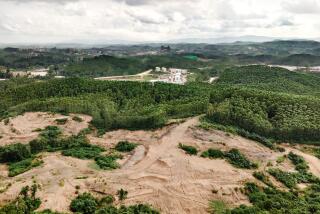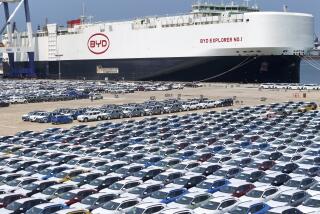China, Japan and South Korea, while vowing to go green at home, promote coal abroad
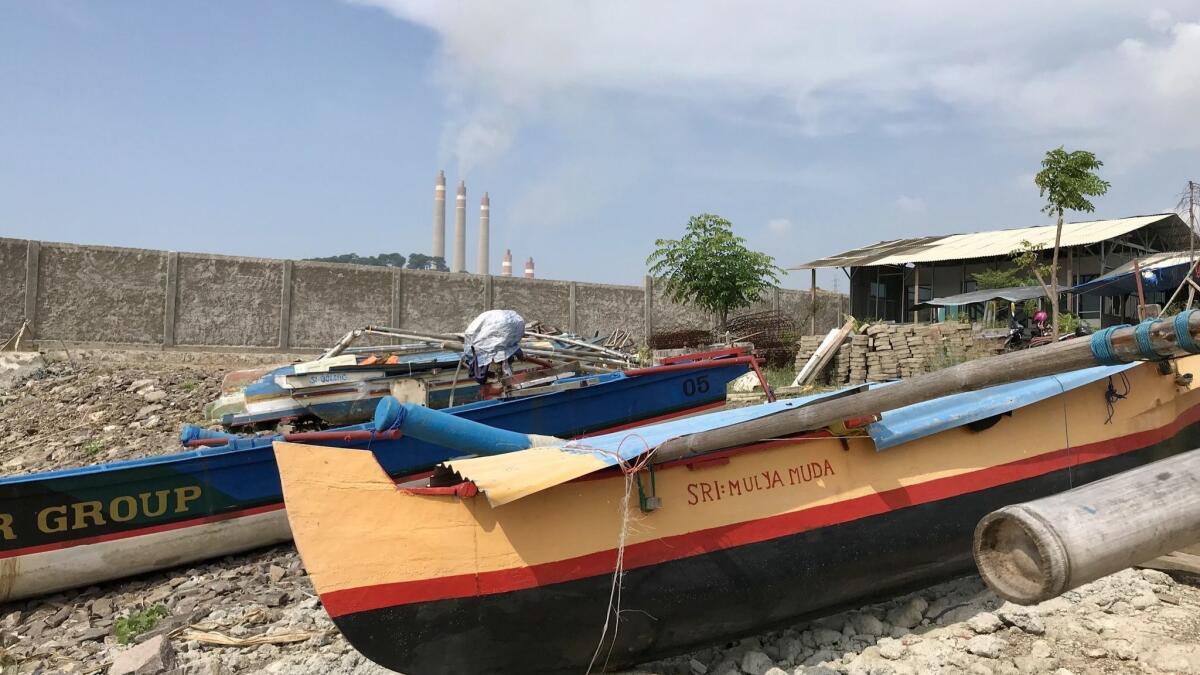
- Share via
Reporting from Suralaya, Indonesia — In the last-ditch global battle against climate change, China, Japan and South Korea have joined other industrialized nations in promising to reduce their use of fossil fuels.
Yet even as they take steps to promote renewable energy at home, these three countries are facing growing scrutiny for financing dozens of new coal-fired power plants in foreign countries.
Most of the plants are being built in Southeast Asia and Africa, in emerging economies where the growing demand for cheap, reliable electricity is most easily met by coal, the single largest source of the greenhouse gas emissions blamed for warming the planet.
Environmental groups accuse the three Asian giants of climate hypocrisy, arguing that their investments in effect export pollution, undermine their commitments under the 2015 Paris climate accord and continue to drive up carbon emissions.
Analysts say that as global markets shift toward renewable sources such as solar and wind power, whose prices are falling, governments in these countries are looking abroad to protect domestic companies that manufacture coal plants and supply equipment like steam turbines and boilers.
“The Chinese, Japanese and Koreans have a lot of coal-fired power equipment that will not have a great deal of international value in another three to five years,” said Melissa Brown, energy finance consultant at the Institute for Energy Economics and Financial Analysis. “So they’re looking to partner with countries that can move forward quickly to put new coal-fired power capacity in place.”
They have found willing buyers in countries such as Indonesia, Vietnam, South Africa and Bangladesh, where governments for now appear more concerned with building their economies and expanding access to electricity than with the environmental impact of burning more coal.
While demand for coal has flattened in China and declined in industrialized Western nations, its rise in the rest of Asia helped push carbon emissions up last year by 2% to the highest level ever recorded, according to the International Energy Agency.
Of about 67 gigawatts of new coal plants worldwide that are slated to receive foreign funding, more than 80% are being financed by China, Japan and South Korea, according to the advocacy group EndCoal.org.
China is by far the biggest player, having supplied or pledged $36 billion for coal plants in 23 countries, according to the IEEFA. The Chinese government has provided financing from state-run banks and included many of the projects in its colossal Belt and Road Initiative, which is designed to expand Beijing’s influence through investments in strategic foreign infrastructure projects.
Less attention has been paid to the overseas coal commitments of Japan and South Korea, which are primarily underwritten by export credit agencies — public lenders that provide government-backed loans to domestic companies doing business overseas.
Addressing the U.N. General Assembly last September, South Korean President Moon Jae-in touted his country’s plans to slash carbon emissions and “assist developing countries’ pursuit of sustainable development.”
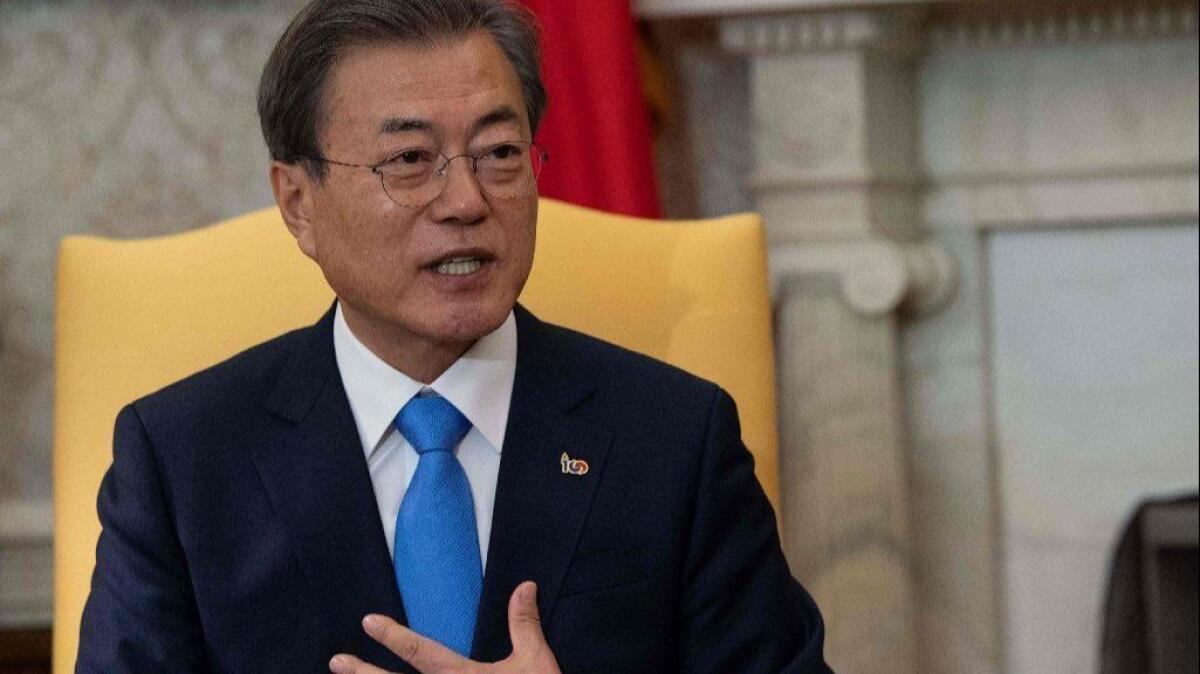
But just two weeks before that speech, at an investment forum sponsored by Moon’s government, a South Korean construction company signed a $1.3-billion agreement to build two huge coal-fired power plants near the coastal Indonesian village of Suralaya, less than 70 miles from the smog-choked capital, Jakarta.
Indonesia, the world’s fourth-most populous nation, has embarked on a major infrastructure expansion under President Joko Widodo, known as Jokowi, who was reelected last month. A total of 16 gigawatts of new coal-based power — nearly the total electricity output of Colombia — is due to be financed by Chinese, Japanese or South Korean banks over the next decade, according to independent estimates.
For Indonesia, the deals offer a chance to tap foreign technology and know-how to exploit billions of tons of domestic coal reserves. The state-owned utility PLN, which owns a monopoly on power distribution, has lured Asian investors by entering into long-term agreements to purchase power from the new plants.
“There’s a clear preference for coal power in Indonesia, and that’s why the East Asian financiers are here — it’s a really attractive business proposition for them,” said Adhityani Putri, executive director of Yayasan Indonesia Cerah, a policy research group in Jakarta.
In 2017, Jokowi broke ground on the addition of two coal-fired plants to an eight-unit coastal power station near Suralaya on the northwest coast of the densely populated island of Java, a project dubbed Java 9 and 10.
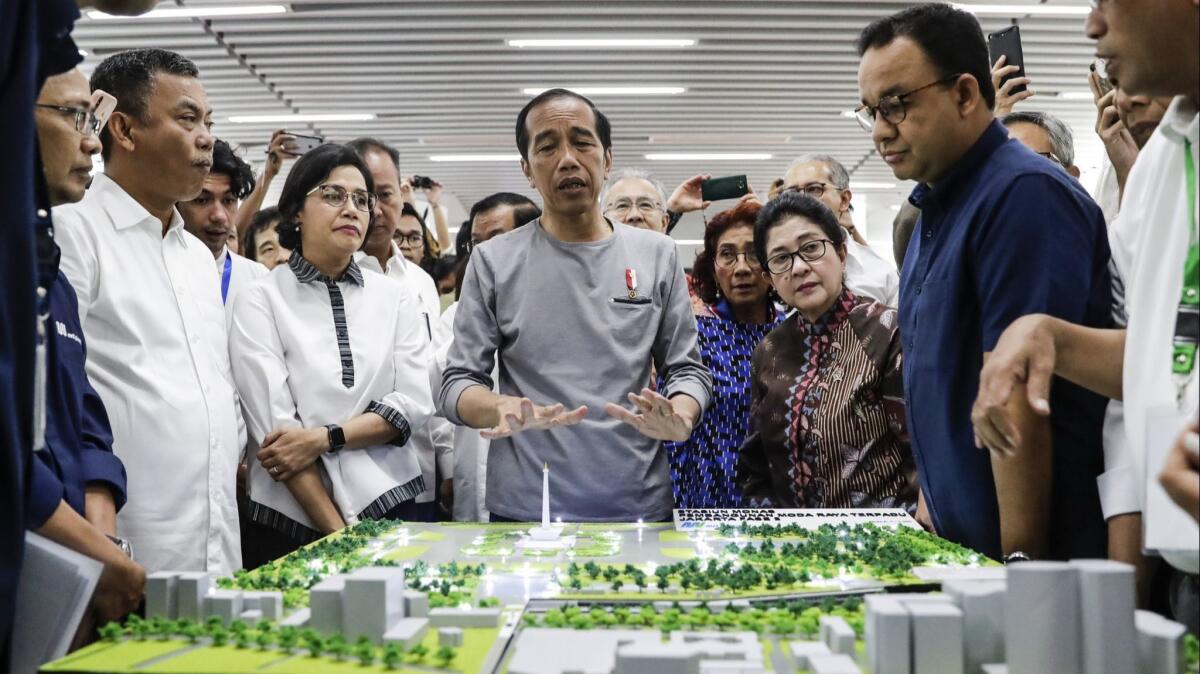
Indonesian energy ministry officials described the new plants as environmentally friendly because they would adopt technology, known as “ultra-supercritical,” that burns less coal and generates less carbon dioxide. (Environmental groups argue that even these plants add emissions the planet can’t handle, making it almost impossible to meet the Paris agreement’s commitment to limit warming to “well below” 2 degrees Celsius.)
Energy industry analysts questioned the need for the additional generating capacity.
The plants would connect to the Java-Bali grid, which has a nearly 100% electrification rate, according to energy ministry figures. And financially troubled PLN, which has been slow to transition to renewables and survives on government subsidies, has said Indonesia already produces more electricity than consumers are demanding.
“Java 9 and 10 will do little to help the average Indonesian get access to electricity and will lead to wasted electrical capacity,” argued Market Forces, an Australian advocacy group that has campaigned against the power plants.
In 2017, Greenpeace highlighted the project’s potential to worsen air quality in Jakarta, one of Asia’s most polluted cities, which is perpetually shrouded in a toxic haze produced by auto exhaust, rampant burning of forests and emissions from eight existing coal power plants in the greater metropolitan region.
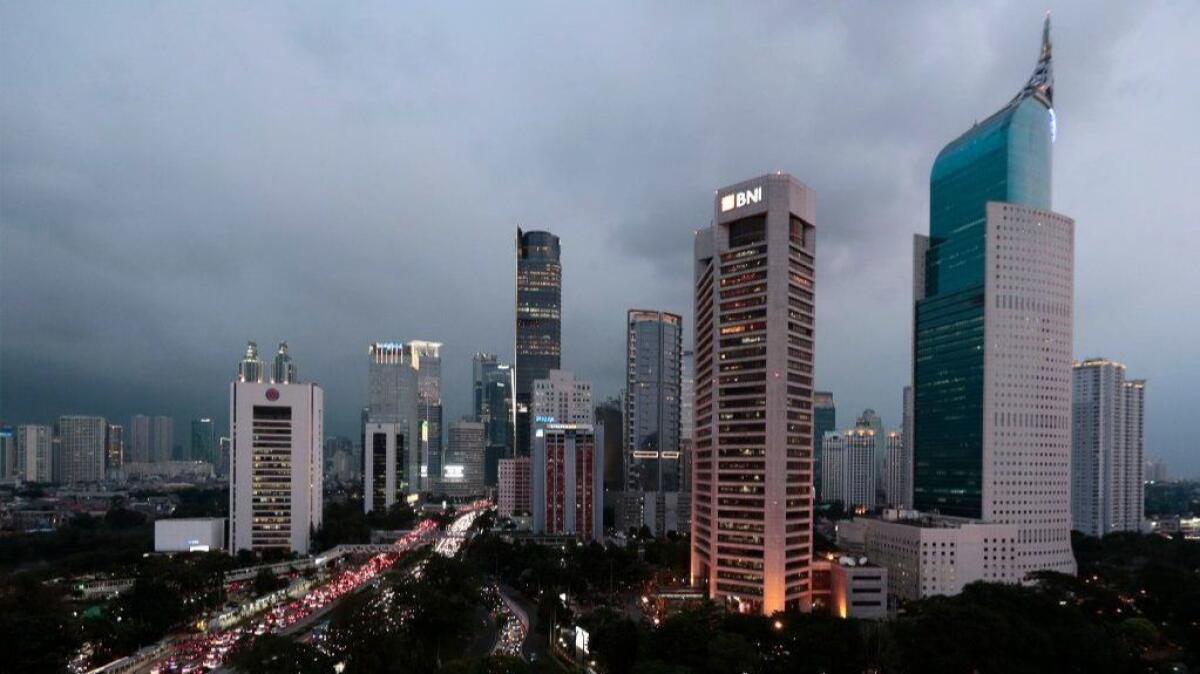
Still, plans for Java 9 and 10 moved forward. Throughout 2018, earth-moving equipment dug up a chunk of hillside next to the existing Suralaya power station and dumped it into the sea to create an outcropping of reclaimed land where the new units would sit.
The landfill covered a coral reef rich with grouper and lobster, said Salimuddin, head of a fishermen’s association in the nearby village of Salira, a cluster of tin-roofed houses set back from a dark-sand beach shadowed on both sides by power plants. A few hundred yards off the shore, coal barges float in the Java Sea.
Since the first factories were set up along the coast in the 1980s, Salimuddin, a 44-year-old who has only one name, said villagers have suffered from coughs and respiratory infections.
“We just accept it now,” he said. “The power companies set up a free clinic, so sometimes we go there for medication.”
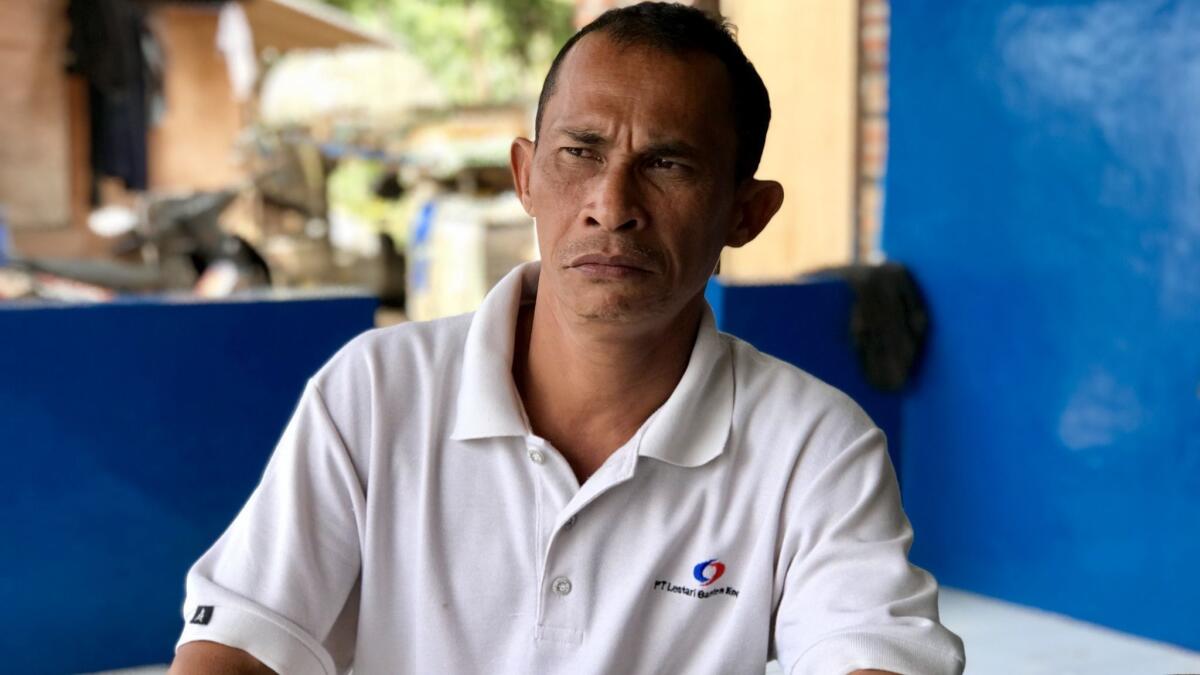
Last November, after the land reclamation portion of the expansion was complete, PLN representatives came to brief villagers on the project, he said. By then, an Indonesian public-private partnership had already signed an agreement with South Korea’s Doosan Heavy Industries and Construction, one of the country’s biggest manufacturers of coal plants and equipment.
Doosan said the project would be bankrolled by two public financial institutions, the Export-Import Bank of Korea and the Korea Trade Insurance Corp. Together the two lenders have financed more than $10 billion worth of coal projects overseas since 2010, according to Solutions for Our Climate, a South Korean advocacy group.
But the financing has yet to come through, and there is no word on when construction will begin.
Part of the delay is due to Doosan’s failing financial health. Last year, the province that is home to South Korea’s biggest coal power plants said it would open no new coal facilities and accelerate the closure of existing ones. With the decline in domestic business, Doosan’s stock price has collapsed by about 75% from two years ago and its credit rating has been slashed.
The company, which employs 7,000 people, is selling off parts of its business to stay afloat, raising questions about its ability to complete the Indonesian project.
“It seems as if [Korean financing for] Java 9 and 10 is designed to help Doosan Heavy survive,” said Joojin Kim, managing director of Solutions for Our Climate.
Representatives of Doosan, the Korean banks and the Indonesian power companies did not respond to requests for comment.
Indonesia suspended several major coal projects last September due to a currency crunch and insufficient demand. But when the government released its 2019 energy plan, it included Java 9 and 10.
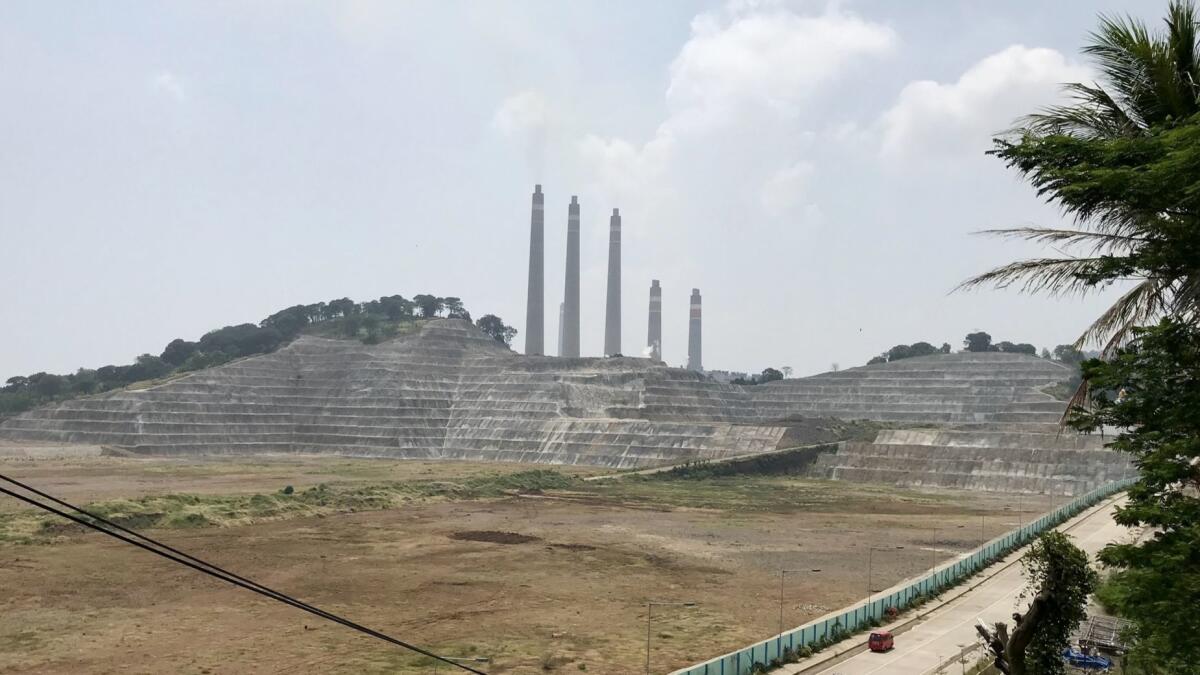
One analyst who spoke to Indonesian officials recently said they were “very aggressive” about completing the project.
Then, last month, the head of PLN, the Indonesian utility, was named as a suspect in a bribery investigation centering on a coal plant contract. Days later, the Korean construction giant Hyundai admitted paying a $460,000 bribe to a local Indonesian official to quell protests surrounding a coal power station it was building in Java.
Indonesian officials have said the corruption probes will not derail other coal projects. But activists hope the inquiries help persuade foreign investors of the need to divest from the industry.
The Korean banks’ “financing of coal projects in Indonesia is embarrassing and financially risky, because of air and climate pollution and corruption associated with the plants, and the fact that coal power is no longer a cheap source of energy due to continuously declining renewable energy prices,” Kim said.
“An accountable and transparent bank would not linger around risky projects like Java 9 and 10.”
ALSO
From ruined bridges to dirty air, EPA scientists price out the cost of climate change
Climate change will harm the entire nation if the U.S. doesn’t act now, federal report warns
The biggest solar parks in the world are now being built in India
More to Read
Sign up for Essential California
The most important California stories and recommendations in your inbox every morning.
You may occasionally receive promotional content from the Los Angeles Times.

